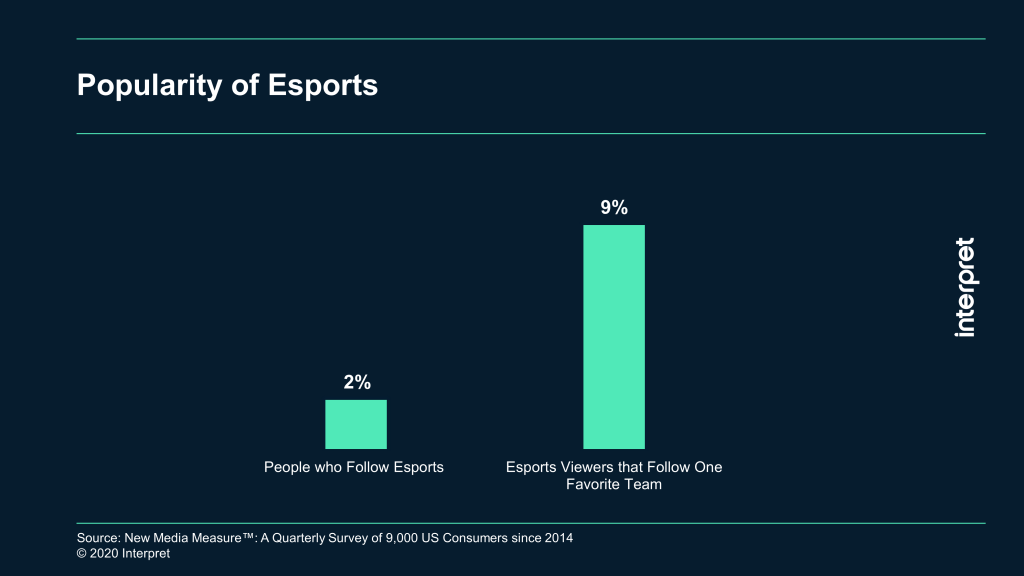As traditional sports have been put on hiatus during the global pandemic, the virtual world of esports has been thrust into the real-world spotlight. Consumers are hungry for live competition, and broadcast/cable networks are eager for content to supply their audiences, even though real-world sports are slowly re-emerging from their COVID-19 slumber. Celebrity athletes from traditional sports are more frequently participating in esports, and big brands are looking to carry over their sponsorship and advertising investments to a digital crowd. But is the esports industry, once thought to be a niche within the global games business, truly ready for the spotlight?
Interpret Vice President Brett Sappington recently presented research in a Fierce Video webinar that dives into the current state of esports and the future distribution and viewership opportunities for this emerging market. Sappington explained that the television industry’s growing interest in esports has been driven by its rising popularity over the past few years, the demand for sporting content during the pandemic, and an attractive target audience for advertisers. Esports viewers are largely young, highly engaged male consumers with notably high adoption of paid video services. In fact, 94% subscribe to at least one OTT service and 69% subscribe to pay TV.
To achieve its potential and rival other major sports, esports must overcome several maturity issues. Awareness among consumers needs to increase, including familiarity with players, teams and esports games themselves. At present, only 2% of people overall follow a particular esports team, and only 9% of esports viewers follow one particular team. Esports will need to mature in its stability, internal infrastructure, and supporting content. While investment in esports continues, the industry must also experience greater maturity in monetization and content distribution rights.
Importantly, esports’ strength lies in its young, avid fan base and market potential. Interpret expects demand for (and viewership of) esports to grow in parallel with the continued maturation of its audience.






